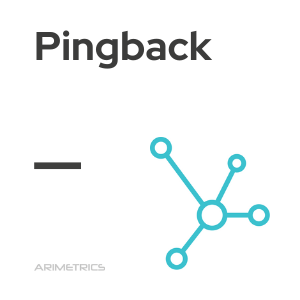Definition:
A pingback is an automatic notification sent to a blog when another blog links to it via a permalink. This mechanism is used to manage backlinks, specifically external links pointing to a URL on a website. The process is carried out using the XML-RPC protocol.
How a pingback works
- Initial publication: Person A publishes content in his blog.
- External link: Person B writes on his own blog and includes a link to Person A’s post.
- Automatic Notification: A pingback is automatically sent to Person A.
- Verification: Person A receives the pingback and must verify that it comes from Person B’s publication.
- Requirements: Both blogs must have pingbacks enabled.
Pingbacks between blogs
Pingbacks allow blogs to communicate in an automated way, creating links between them. This is relevant for SEO, as quality links from external posts can improve search engine visibility. However, it is important to ensure that pingbacks are authentic, as spammers can abuse this feature. Manually reviewing and approving pingback requests is a good practice.
Advantages and disadvantages of pingbacks
Advantages
Among the advantages of using pingbacks we can mention:
- Improved SEO: When used correctly and without spamming intent.
- Increased targeted traffic: Readers can follow links in the comments section, increasing visits.
- Community connections: Facilitate interaction with other authors and readers in the same niche.
- Valuable content: Offer readers links to relevant and useful content.
Disadvantages
Some of the disadvantages of using pignbacks are:
- Spam risk: Spammers can flood the comments section with unwanted links.
- Limited availability: Many blogs have disabled pingbacks due to spam, which limits their effectiveness.

